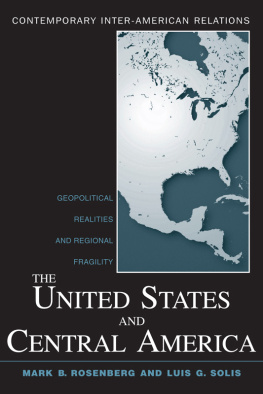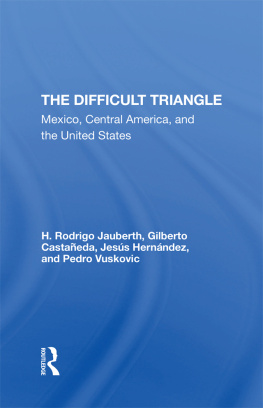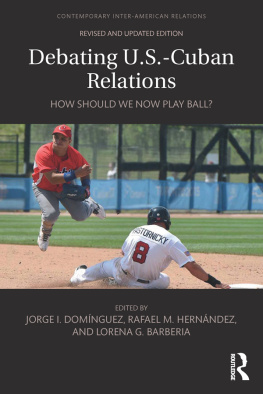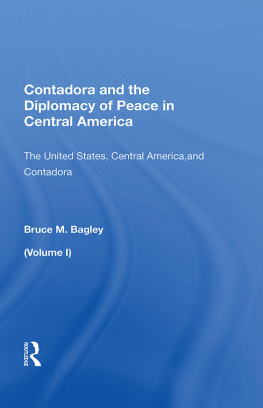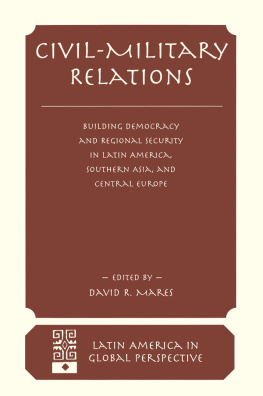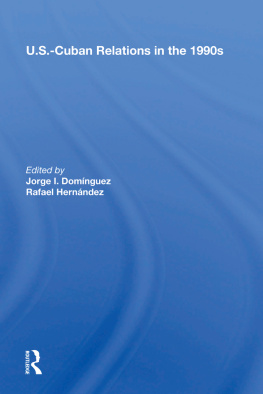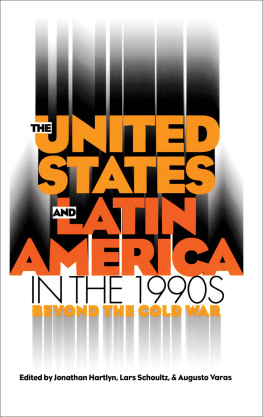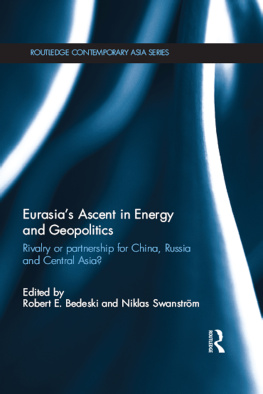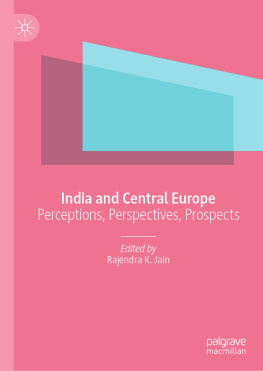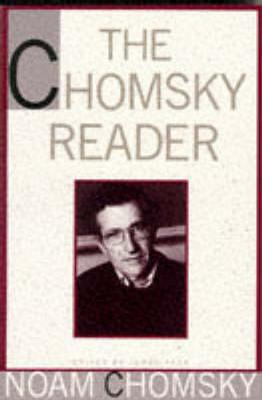THE UNITED STATES
AND
CENTRAL AMERICA
OTHER TITLES IN THE CONTEMPORARY INTER-AMERICAN RELATIONS SERIES EDITED BY JORGE DOMNGUEZ AND RAFAEL FERNNDEZ DE CASTRO
The United States and Mexico:
Between Partnership and Conflict
Jorge Domnguez and Rafael Fernndez de Castro
The United States and Chile:
Coming in from the Cold
David R. Mares and Francisco Rojas Aravena
The United States and Venezuela:
Rethinking a Relationship
Janet Kelly and Carlos A. Romero
The United States and Argentina:
Changing Relations in a Changing World
Deborah Norden and Roberto Russell
The United States and Peru:
Cooperation at a Cost
Cynthia McClintock and Fabian Vallas
The United States and Brazil:
A Long Road of Unmet Expectations
Mnica Hirst, with an essay by Andrew Hurrell
The United States and the Caribbean:
Transforming Hegemony and Sovereignty
Anthony P. Maingot and Wilfredo Lozano

Routledge
Taylor & Francis Group
270 Madison Avenue
New York, NY 10016
Routledge
Taylor & Francis Group
2 Park Square
Milton Park, Abingdon
Oxon OX14 4RN
2007 by Taylor & Francis Group, LLC
Routledge is an imprint of Taylor & Francis Group, an Informa business
International Standard Book Number-10: 0-415-95835-0 (Softcover) 0-415-95834-2 (Hardcover)
International Standard Book Number-13: 978-0-415-95835-6 (Softcover) 978-0-415-95834-9 (Hardcover)
No part of this book may be reprinted, reproduced, transmitted, or utilized in any form by any electronic, mechanical, or other means, now known or hereafter invented, including photocopying, microfilming, and recording, or in any information storage or retrieval system, without written permission from the publishers.
Trademark Notice: Product or corporate names may be trademarks or registered trademarks, and are used only for identification and explanation without intent to infringe.
Library of Congress Cataloging-in-Publication Data
Rosenberg, Mark, 1949-
United States and Central America : geopolitical realities and regional fragility / Mark B. Rosenberg, Luis G. Sols.
p. cm. -- (Contemporary inter-American relations series)
Includes bibliographical references.
ISBN 978-0-415-95834-9 (alk. paper) -- ISBN 978-0-415-95835-6 (alk. paper)
1. Central America--Foreign relations--United States. 2. United States--Foreign relations--Central America. 3. United States--Foreign relations--1989- 4. Geopolitics. I. Sols Rivera, Luis Guillermo. II. Title.
F1436.8.U6R67 2007
327.730728--dc22 | 2006102720 |
Visit the Taylor & Francis Web site at
http://www.taylorandfrancis.com
and the Routledge Web site at
http://www.routledge.com
Contents
Preface
The transition from authoritarian rule to constitutional government
The continent-wide economic depression of the 1980s and the subsequent shift toward more open market-conforming economies
The end of the Cold War in Europe
The transformation of relations with the United States
Each of these major events and processes was an epochal change in the history of Latin America and the Caribbean. More striking is that all four changes took place within the same relatively short time, though not all four affected every country in the same way. They became interconnected, with change on each dimension fostering convergent changes on other dimensions. Thus, by the beginning of the new millennium, we had witnessed an important transformation and intensification in U.S.Latin American relations.
This book is part of a series of ten books on U.S. relations with Latin American and Caribbean countries. Each of these books is focused on the fourth of these four transformationsnamely, the change in U.S. relations with Latin America and the Caribbean. Our premise is that the first three transformations provide pieces of the explanation for the change in U.S. relations with its neighbors in the Americas and for the changes in the foreign policies of Latin American and Caribbean states. Each of the books in the series assesses the impact of the epoch-making changes upon each other.
The process of widest impact was the economic transformation. By the end of 1982, much of North America, Western Europe, and East Asia launched into an economic boom at the very time when Latin America plunged into an economic depression of great severity that lasted approximately to the end of the decade. As a consequence of such economic collapse, nearly all Latin American governments readjusted their economic strategies. They departed from principal reliance on import-substitution industrialization, opened their economies to international trade and investment, and adopted policies to create more open market-conforming economies. (Even Cuba had changed its economic strategy by the 1990s, making its economy more open to foreign direct investment and trade.)
The region-wide economic changes had direct and immediate impact upon U.S.Latin American relations. The share of U.S. trade accounted for by Latin America and the Caribbean had declined fairly steadily from the end of World War II to the end of the 1980s. In the 1990s, in contrast, U.S. trade with Latin America grew at a rate significantly faster than the growth of U.S. trade worldwide; Latin America had become the fastest growing market for U.S. exports. The United States, at long last, did take notice of Latin America. Trade between some Latin American countries also boomed, especially within subregions such as the southern cone of South America, Venezuela and Colombia, the Central American countries, and, to a lesser extent, the anglophone Caribbean countries. The establishment of formal freer-trade areas facilitated the growth of trade and other economic relations. These included the North American Free Trade Agreement (NAFTA), which grouped Mexico, the United States, and Canada; the MERCOSUR (Common Market of the South), with Argentina, Brazil, Paraguay, and Uruguay; the Andean Community, whose members were Bolivia, Colombia, Ecuador, Peru, and Venezuela; the Central American Common Market (CACM); and the Caribbean Community (CARICOM). U.S. direct and portfolio investment in large quantities flowed into Latin America and the Caribbean, financing the expansion of tradable economic activities. The speed of portfolio investment transactions, however, also exposed these and other countries to marked financial volatility and recurrent financial panics. The transformation in hemispheric international economic relationsspecifically in U.S. economic relations with the rest of the hemispherewas already far-reaching as the twenty-first century began.
These structural economic changes had specific and common impacts on the conduct of international economic diplomacy. All governments in the Americas, large and small, had to develop a cadre of experts who could negotiate concrete, technical trade, investment, and other economic issues with the United States and with other countries in the region. All had to create teams of international trade lawyers and experts capable of defending national interests and the interests of particular business firms, in international, inter-American, or subregional dispute-resolution panels or court-like proceedings. The discourse and practice of inter-American relations, broadly understood, became much more professionalless the province of eloquent poets and more the domain of number-crunching litigators and mediators.

